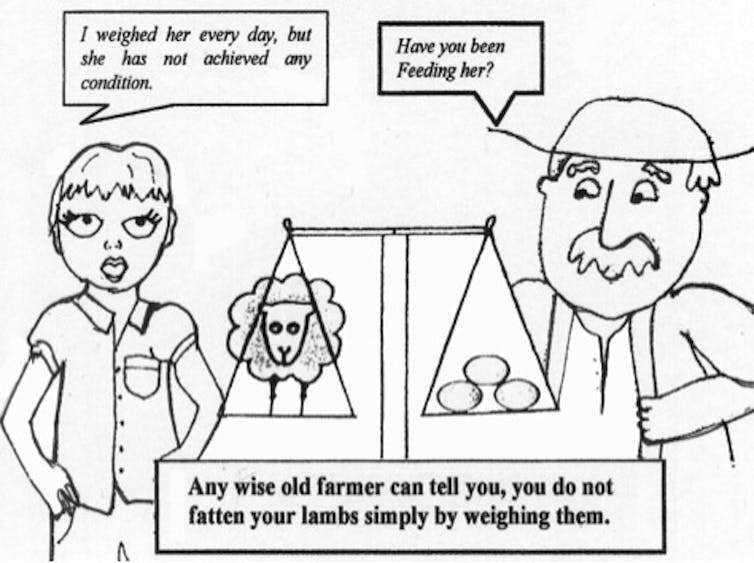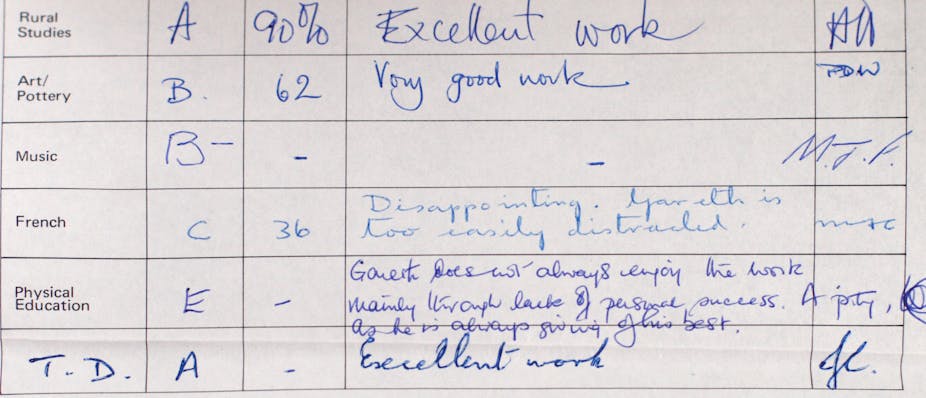If you ask any parent if they want to know about their child’s progress at school, they will of course say yes. However, while some school reports are valuable and informative for parents and students, others can be a bit of a mystery.
School reports fall into two broad categories: formative or ongoing reports of students’ classwork progress, and summative reports, which outline success at the end of a unit or assessment task. So what do these reports tell parents? What are parents hoping to find out? Are they helpful or have they just become arbitrary?
Formative reports about your child’s academic knowledge
At the local school level, parents receive formal school reports a couple of times a year and informal feedback regularly from the classroom teacher. If your child gets a mark of eight for spelling, do you wonder whether it was out of ten or 20? Do you ask what marks the other children in the class received? The initial fleeting moment of pride disappears when you find out the eight was out of 20 and 95% of the other children received a mark between 12 and 17.
This comparative assessment against other students does not tell you, as a parent, much at all about what your child knows about the spelling process. As a parent you want to know what your child knows about the structure of the English language and what the teacher is doing to progress your child’s knowledge of how to develop and use these skills.
School reports that contain information about what students know about the eight key learning areas of education (the Arts, English, Health and Physical Education, Languages Other Than English, Mathematics, Science, Studies of Society and Environment and Technology) are valuable for parents. School reports that contain information about the teacher’s plan to support your child’s learning are helpful. This is why regular feedback from the classroom teacher on work students have completed is so much more valuable in relation to improving a students’ learning and understanding.
Formative reports about your child’s social skills
Parents also want to know if their child enjoys school. School reports that inform parents about how their child is integrating into the social network at school, building friendships, learning to work and play with other children, and learning about conflict-resolution skills are important because these attributes are building blocks of life-long learning processes.
Once again, parents also want to know how the teacher facilitates their child’s social and emotional well-being. After all, 13-plus years is a long time to be going to primary and secondary school if a student is not enjoying the experience.
Summative reports comparing your child’s progress
The second major form of school reporting is the use of assessment to inform educational decision makers. Summative assessment is used by governments and education departments to inform policy and budgetary decisions.
In Australia students in Year three, five, seven and nine participate in the National Assessment Program - Literacy and Numeracy (NAPLAN) in May each year. All students in these year levels are expected to participate in tests of reading, writing, language conventions (spelling, grammar and punctuation) and numeracy. All government and non-government education authorities have contributed to the development of NAPLAN materials.
NAPLAN student reports provide parents with a child’s result, the national average, the average for the year level at the child’s school and the range of the middle 60% of students based on an achievement scale from “Band 1” to “Band 10”. However, although the testing is undertaken in May, the reports are received three to four months later in August/September.
The first interesting issue in relation to national testing like NAPLAN is that in Australia school curricula are planned around The Australian Curriculum for foundation to Year ten. Surely to be valuable to parents and students the tests should reflect the curricula being taught in schools! The second interesting issue is how the NAPLAN results can be of value to parents and teachers when they are received three or four months later.
It’s also important to keep in mind that not all students in any year level are at the same standard. From the 2008 NAPLAN testing results the following conclusion was drawn:
Based on average reading gains between Year three and Year five, the highest-performing 10% of students in each year of primary school are about five years ahead of the lowest-performing 10% of students in that year.
What do we know about school reports?
Students’ school reports serve very different purposes. The school-based reports are directed to the individual student and parent and provide the information that directs curriculum decision making at the school level. These provide valuable feedback both in terms of being relevant and regular. Evidence-based decision making at the local level is very important in improving students’ educational experiences and learning achievement.
National and international large-scale testing programs are designed to provide macro-level information for governments and education departments. The purpose is to compare schools, states and territories, and countries against each other. These reports are not directed at the individual learner’s needs. Bearing this in mind, research has demonstrated:
feedback to students is one of the most effective strategies for promoting further learning. To be most effective, feedback must be timely, must be in a form that encourages effort and that allows learners to see the progress they are making. Feedback must identify clear actions that individuals can take to make further learning progress.
We must constantly remind ourselves that it is the daily classroom teaching and learning activities that students participate in that facilitates achievement - not the testing.


